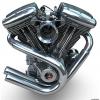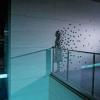NAD+ repletion improves muscle function in muscular dystrophy and counters global PARylation
http://stm.sciencema.../8/361/361ra139
Dongryeol Ryu1,*, Hongbo Zhang1,*, Eduardo R. Ropelle1,2,*, Vincenzo Sorrentino1, Davi A. G. Mázala3, Laurent Mouchiroud1, Philip L. Marshall4, Matthew D. Campbell5, Amir Safi Ali5, Gary M. Knowels5, Stéphanie Bellemin6, Shama R. Iyer7, Xu Wang1, Karim Gariani1, Anthony A. Sauve8, Carles Cantó9, Kevin E. Conley5, Ludivine Walter6, Richard M. Lovering7, Eva R. Chin3,†, Bernard J. Jasmin10, David J. Marcinek5, Keir J. Menzies1,4,‡ and Johan Auwerx1,‡
+ Author Affiliations
↵‡Corresponding author. Email: admin.auwerx@epfl.ch (J.A.); kmenzies@uottawa.ca (K.J.M.)
↵* These authors contributed equally to this work.
↵† Present address: Cytokinetics Inc., South San Francisco, CA 94080, USA.
Science Translational Medicine 19 Oct 2016:
Vol. 8, Issue 361, pp. 361ra139
DOI: 10.1126/scitranslmed.aaf5504
Article
Figures & Data
Info & Metrics
eLetters
PDF
You are currently viewing the abstract.
Making muscle work better
Degenerating muscle—whether from muscular dystrophies, myopathies, or other diseases—loses its mitochondria (the energy supply) and an essential cofactor nicotinamide adenine dinucleotide (NAD+), while gaining an extra load of enzymes that use up NAD+, as reported by Ryu and colleagues. The resulting loss of NAD+ is exacerbated by a drop in NAD+ biosynthetic enzymes, such as NAMPT. Restoration of NAD+ levels in either mice or worms with disease-like degenerating muscles improved muscle function, a consequence of more mitochondria, more muscle structural proteins, and a decrease in inflammation. The authors suggest that NAD+ repletion may be a successful therapeutic approach for a number of muscle-wasting diseases.
Abstract
Neuromuscular diseases are often caused by inherited mutations that lead to progressive skeletal muscle weakness and degeneration. In diverse populations of normal healthy mice, we observed correlations between the abundance of mRNA transcripts related to mitochondrial biogenesis, the dystrophin-sarcoglycan complex, and nicotinamide adenine dinucleotide (NAD+) synthesis, consistent with a potential role for the essential cofactor NAD+ in protecting muscle from metabolic and structural degeneration. Furthermore, the skeletal muscle transcriptomes of patients with Duchene’s muscular dystrophy (DMD) and other muscle diseases were enriched for various poly[adenosine 5′-diphosphate (ADP)–ribose] polymerases (PARPs) and for nicotinamide N-methyltransferase (NNMT), enzymes that are major consumers of NAD+ and are involved in pleiotropic events, including inflammation. In the mdx mouse model of DMD, we observed significant reductions in muscle NAD+ levels, concurrent increases in PARP activity, and reduced expression of nicotinamide phosphoribosyltransferase (NAMPT), the rate-limiting enzyme for NAD+ biosynthesis. Replenishing NAD+ stores with dietary nicotinamide riboside supplementation improved muscle function and heart pathology in mdx and mdx/Utr−/− mice and reversed pathology in Caenorhabditis elegans models of DMD. The effects of NAD+ repletion in mdx mice relied on the improvement in mitochondrial function and structural protein expression (α-dystrobrevin and δ-sarcoglycan) and on the reductions in general poly(ADP)-ribosylation, inflammation, and fibrosis. In combination, these studies suggest that the replenishment of NAD+ may benefit patients with muscular dystrophies or other neuromuscular degenerative conditions characterized by the PARP/NNMT gene expression signatures.
Edited by Bryan_S, 22 October 2016 - 09:52 AM.
































 This topic is locked
This topic is locked






















